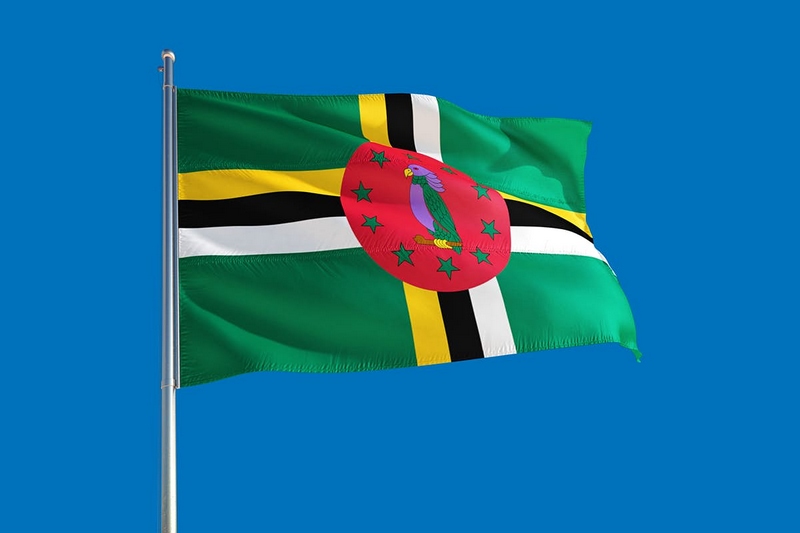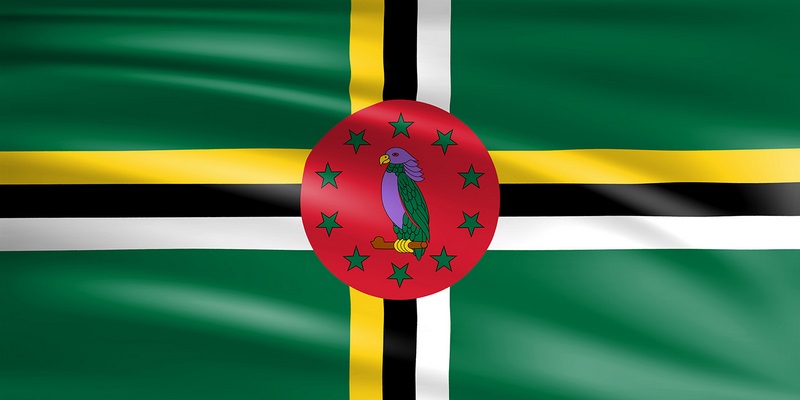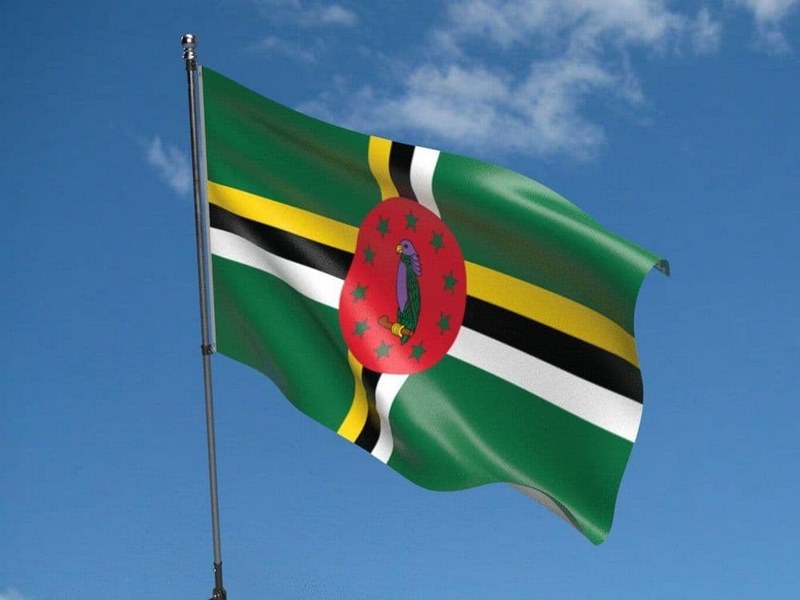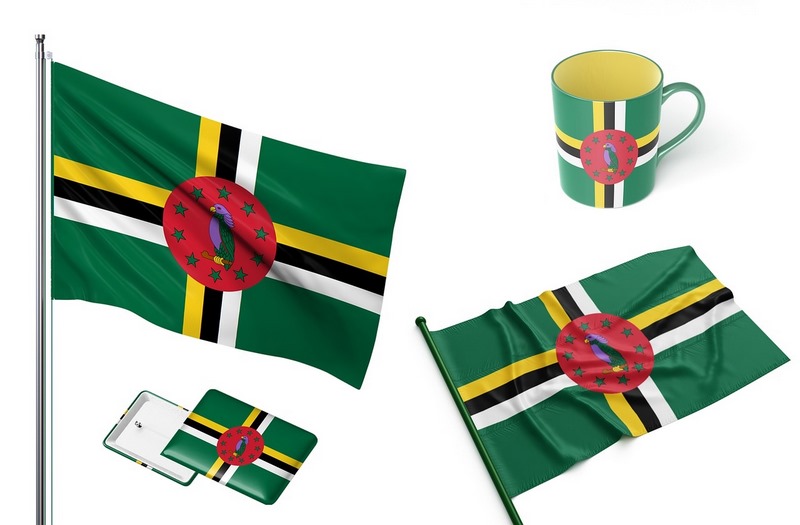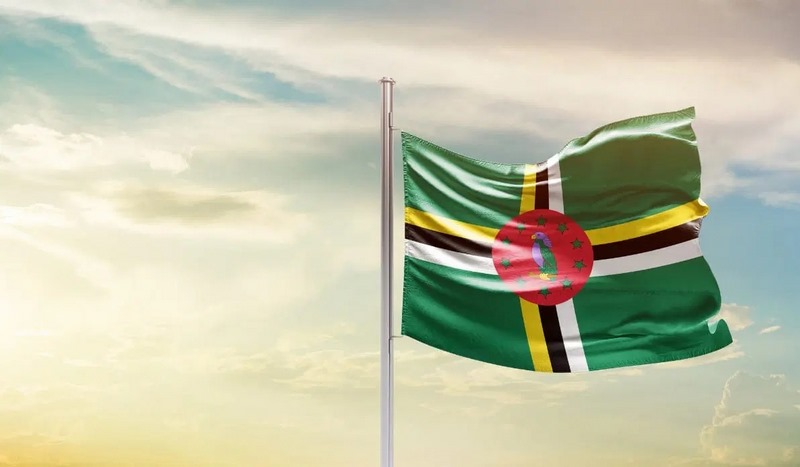Get free consultation
Fill out the form and we will contact you
The Dominican Republic flag is a unique and meaningful symbol that reflects the natural beauty and spirit of this island nation. With a green background symbolizing the lush rainforests, the flag also features prominent yellow, black, and white diagonal stripes representing cultural and ethnic diversity. At the center of the flag is the image of the Sisserou parrot, a symbol of freedom and bravery. Let's explore the profound meaning and historical story behind this special flag.
The flag of Dominica is not just a national symbol but also a part of the story of the nation's freedom and independence, with significant and meaningful periods of upheaval and change in its history.
The flag of Dominica has undergone various stages of evolution
In 1955, Dominica first adopted a distinct flag, marking a significant milestone in asserting national sovereignty. From 1965 to 1978, the flag underwent several modifications reflecting important changes in the country's political landscape. Each version of the flag during this period had its unique characteristics and was tied to significant historical milestones of Dominica.
=Before gaining independence on November 3, 1978, the Dominica flag still bore many characteristics of the British colonial flag. However, this day marked an important historical milestone when Dominica officially unveiled a new flag symbolizing the nation's freedom and independence. This new design was entirely different from before, clearly expressing the spirit of autonomy and the aspiration for a bright future.
From 1981 to 1988, Dominica underwent significant transformations with various changes to further develop and integrate into the international community. During this period, the flag was also modified multiple times, reflecting Dominica's forward-looking spirit and adaptability to new challenges.
Finally, the flag that we know today was officially recognized in 1990. The flag's green background symbolizes the growth and fertility of the tropical nature. In the center of the flag is a cross made up of three colors: black, white, and yellow, representing the three main ethnic groups of Dominica: Black, White, and Mulatto.
At the center of the cross is a prominent red circle containing the image of a purple Sisserou parrot perched on a branch. Surrounding the circle are ten green five-pointed stars representing the ten parishes of the nation.
The green color on the Dominican Republic flag is not just a simple hue but a profound symbol of the country's culture and nature, with many notable meanings.
The green color symbolizes life and nature
The green color on the Dominican Republic flag signifies the richness of the natural landscape, especially the lush green forests that cover the island. Dominica is known as the "Nature Isle of the Caribbean" due to its tropical rainforests and majestic mountain ranges like Morne Trois Pitons, Morne Diablotin, and Morne Watt, along with its rivers and waterfalls such as Boiling Lake, Victoria Falls, and Trafalgar Falls, which create picturesque natural beauty.
The green color highlights other symbols on the flag, such as the purple Sisserou parrot and the ten blue stars. This color honors Dominica's distinctive natural beauty and emphasizes the crucial role of the environment and nature in the nation's culture and existence.
The green color is not just a hue but a symbol of life, the love for life itself. It reflects the commitment of the people of Dominica to protect the environment and preserve natural resources. At the same time, it evokes national pride and love for their homeland.
Regarding the Three Stripes: Yellow, Black, and White:
The black stripe on the flag of Dominica symbolizes the unity and independence of the nation. Dominica is known for its diversity in ethnicity, culture, and languages. The presence of the black stripe is evidence of integration and respect among communities, highlighting efforts to maintain unity amidst the country's diversity.
Impression of the Three Stripes on the Flag
The white stripe on the flag symbolizes purity and hope. Dominica is a lush green island with pristine landscapes and fresh air.
The white color on the flag reflects the reverence of the people towards nature and their belief in a bright and sustainable future. It also symbolizes the commitment to protect and preserve the environment, a core value in Dominican society.
The yellow stripe symbolizes the richness of Dominica's land. This country is bathed in sunlight and is a treasure trove of rich natural resources. The yellow color on the flag represents wealth and the potential for economic development in Dominica, as well as the pride of its people in the beauty and resources of the nation.
Each star on the Dominican flag represents one of the country's 10 parishes, including St Andrew, St David, St George, St John, St Joseph, St Luke, St Mark, St Patrick, St Paul, and St Peter. The presence of these stars symbolizes diversity and unity among different communities on the island. It is a symbol of a multicultural community and sustainable development.
10 Stars Symbolizing 10 Parishes
The blue color of the stars on the flag also signifies the desire to work together and the unity of the parishes. Placing these stars in the center of the flag emphasizes the importance of each parish within the social and political structure of Dominica. It also symbolizes gratitude for the continuous contributions of each community towards the development and prosperity of the country.
The red color on the flag is often associated with justice and rights, core values of a democratic society. The red circle positioned at the center of the flag is a bold and powerful symbol of the importance Dominica places on upholding justice and protecting the rights of all citizens.
Additionally, the color red also symbolizes the determination and courage of the Dominican people. It underscores that the nation is ready and steadfast in the pursuit of justice and in safeguarding the rights of individuals and communities.
The prominent red circle on the flag
In Dominica's social value system, the red circle not only symbolizes justice but also expresses the desire for a fair society where rights and responsibilities are shared equally among all. This represents the nation's commitment to sustainable development and societal harmony.
The Sisserou parrot is a unique species found only on the island of Dominica, with a very limited population estimated at only 250 to 350 surviving individuals. Its presence on the national flag is a symbol of the country's rarity and uniqueness.
Additionally, the purple color of the Sisserou parrot is uncommon on national flags, emphasizing the special and diverse ecosystem of Dominica. It symbolizes the biodiversity and unique natural beauty that the island nation proudly possesses.
Placing the image of the Sisserou parrot in the center of the flag is not only to honor this rare and precious bird, but also to underscore Dominica's commitment and concern for conserving its natural environment and wild species.
The image of the distinctive parrot of the island nation
The flag of Dominica is not just a national symbol but also a story of diversity and freedom. With bright colors and the image of the Sisserou Parrot, the flag reflects pride in the country's natural wealth. The cross pattern carries deep historical and cultural significance for the nation. The flag of Dominica represents not only imagery but also symbolizes faith and hope in the future, along with a desire for sustainable maintenance and development for the community.
Readers interested in learning more about this country and Dominica's citizenship-by-investment policies can contact us. Our company provides diverse dual citizenship services in several globally recognized nations. We promise quality, cost-effective investment, and streamlined procedures for all our clients. Contact us via our website: https://quoctichthuhai.com/.
Fill out the form and we will contact you

